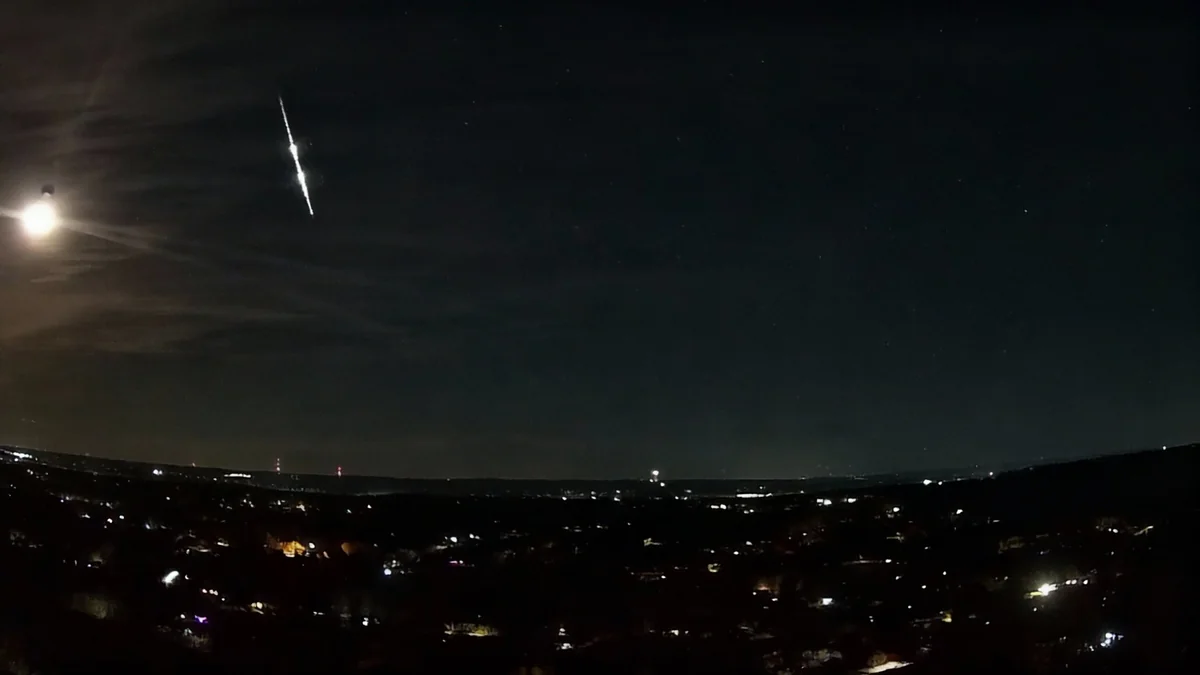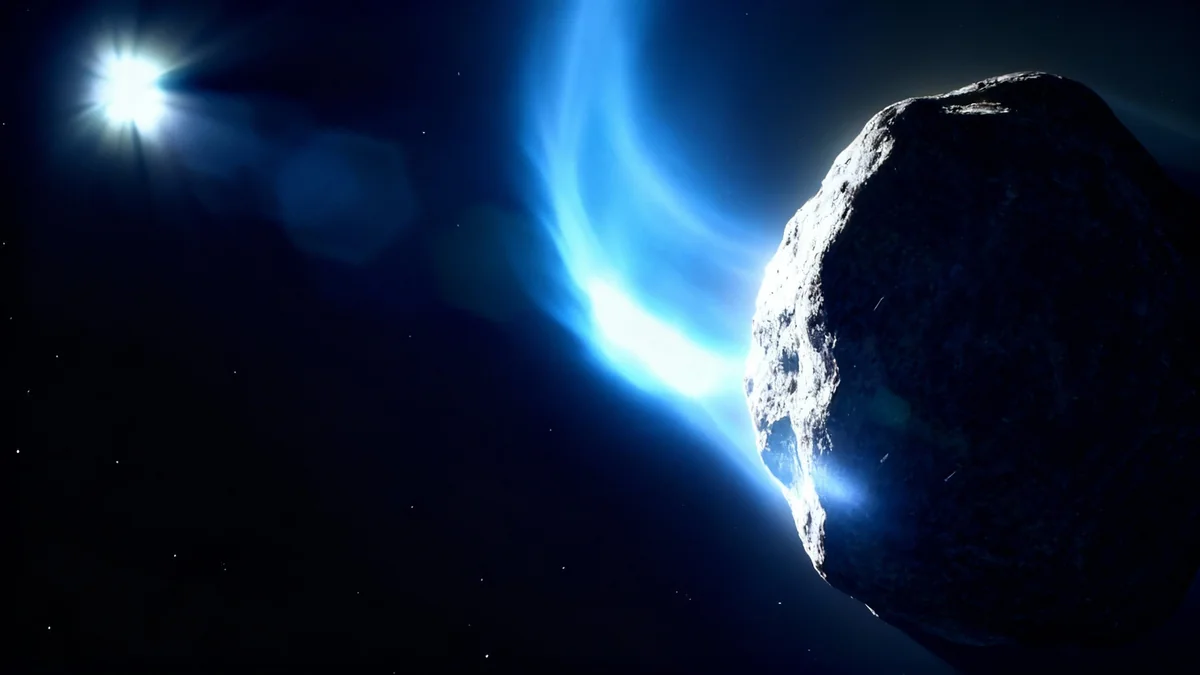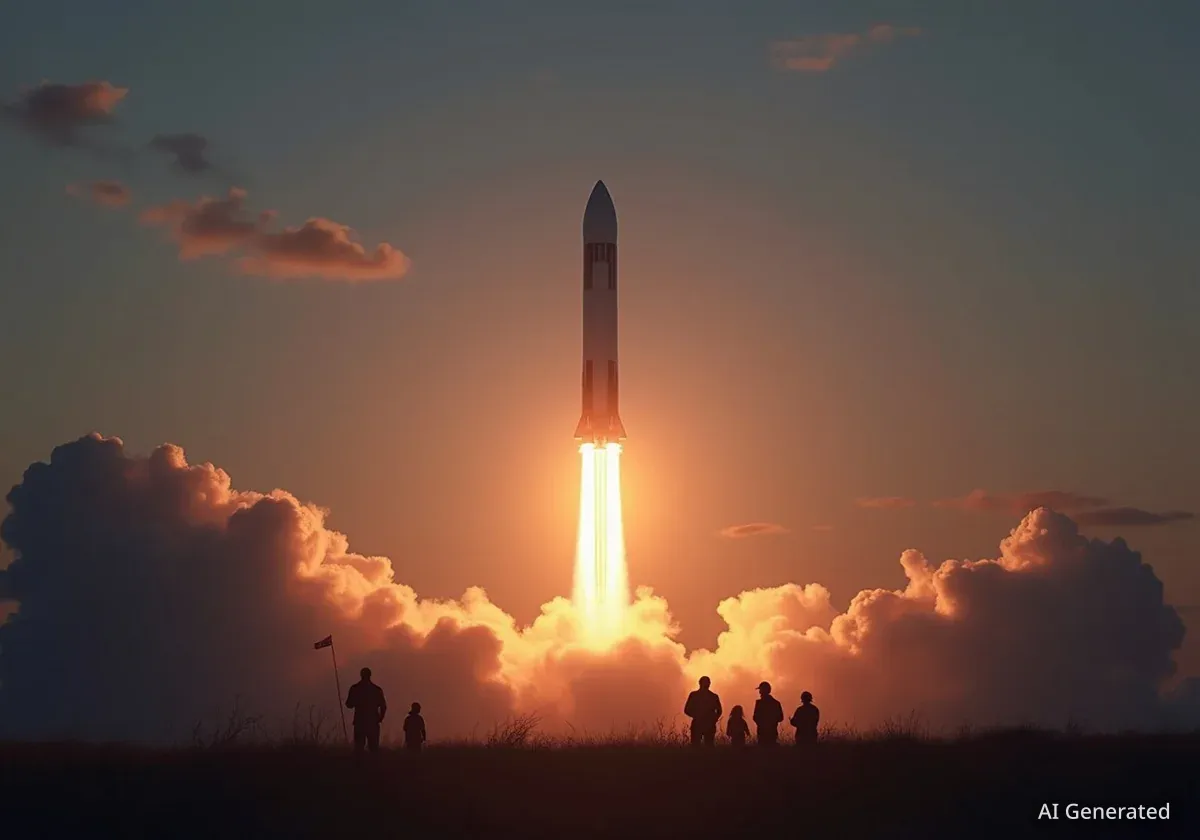Skygazers have a chance to witness a spectacular celestial event this week as the Southern Taurid meteor shower reaches its peak overnight on November 4-5. The annual event is known for producing exceptionally bright meteors, often called fireballs, that can light up the night sky.
This year's peak coincides with what astronomers call a "swarm year," a period when Earth passes through a denser field of debris left behind by Comet 2P/Encke. While a bright, near-full moon will present a challenge for viewing, the potential for large, dramatic meteors remains a significant draw for observers.
Key Takeaways
- The Southern Taurid meteor shower will peak on the night of November 4 and into the early morning of November 5.
- This event is known for producing bright fireballs, which are meteors that appear larger and more brilliant than typical shooting stars.
- 2025 is a "swarm year," increasing the likelihood of encountering larger debris particles from Comet 2P/Encke.
- A near-full moon will be visible during the peak, potentially obscuring fainter meteors, but the brightest fireballs should still be visible.
Understanding the Taurid Meteor Shower
The Southern Taurid meteor shower occurs annually when our planet travels through the stream of cosmic dust and rock left by Comet 2P/Encke. As these tiny particles, known as meteoroids, enter Earth's atmosphere at high speeds, they burn up due to friction, creating the streaks of light we call meteors or shooting stars.
What sets the Taurids apart is the nature of the debris. The particles from Comet 2P/Encke are often larger than those found in other meteor streams. This results in brighter, longer-lasting meteors. The most impressive of these are fireballs, which can be bright enough to momentarily rival the light of Venus or even cast shadows on the ground.
The Source: Comet 2P/Encke
Comet 2P/Encke has one of the shortest orbital periods of any known comet, circling the sun approximately every 3.3 years. Over thousands of years, it has left a wide and diffuse trail of debris in its wake. Earth passes through this stream twice a year, creating both the Southern and Northern Taurid meteor showers.
A Special 'Swarm Year'
This year's event holds special interest because it is a designated "swarm year." These periods, which occur irregularly every few years, happen when Earth's orbit intersects with a particularly concentrated ribbon of larger fragments within the comet's debris trail.
According to Robert Lunsford, an expert with the American Meteor Society, the particles responsible for the swarm are significantly larger than typical meteoroids. "Normal Taurid particles are usually the size of pea gravel with a few larger particles mixed in," Lunsford explained. "The swarm particles are only the size of baseballs up to basketballs, but will appear as fireballs from the ground instead of normal meteors."
"We encounter these larger meteors about twice a decade at irregular intervals," Lunsford noted, highlighting the rarity and significance of these events.
The last major Taurid swarm event occurred in 2022, and the next one is not anticipated until 2032. While experts suggest Earth is passing through the outer edge of the swarm this year, which may result in a less intense display than in 2022, recent activity has been promising. "So far though, fireball activity in October has been higher than normal, indicating that we may have underestimated the strength of this year's display," Lunsford added.
Fireball Facts
- Brightness: Fireballs are defined as meteors brighter than magnitude -4, which is the same brightness as the planet Venus in the morning or evening sky.
- Size: The meteoroids that create them can range from the size of a baseball to a basketball.
- Speed: They enter the atmosphere at tens of thousands of miles per hour, creating intense heat and light.
How to Watch the Shower
Despite the interfering moonlight, catching a glimpse of a Taurid fireball is still possible. For the best experience, preparation and patience are key. The peak activity is expected in the hours after midnight, local time, on the night of November 4 into the morning of November 5.
Viewing Tips for Success
- Find a Dark Location: Get as far away from city lights as possible. The darker the sky, the better your chances of seeing meteors.
- Look Towards Taurus: The meteors will appear to originate from a point, called the radiant, in the constellation Taurus. This constellation rises in the east after sunset and will be high in the southern sky after midnight. However, you don't need to stare directly at the radiant; the meteors with the longest trails will appear farther away from it.
- Let Your Eyes Adjust: It takes about 30 minutes for your eyes to fully adapt to the dark. Avoid looking at your phone or other bright lights during this time. Using a red flashlight can help preserve your night vision.
- Be Patient: Meteor watching is a waiting game. During the peak, you might see up to 10 bright meteors per hour. Settle into a comfortable chair or lie on a blanket and enjoy the view.
- Dress Warmly: November nights can be cold. Bring layers of clothing, a hat, and a warm drink to stay comfortable while you watch.
The primary challenge remains the bright moon. Its glare will wash out the sky, making it impossible to see the fainter meteors. However, the Taurids are famous for their fireballs, and these should be bright enough to cut through the moonlight. Observers should focus on finding a clear patch of sky away from the moon's direct glare to maximize their chances of spotting one of these spectacular events.





